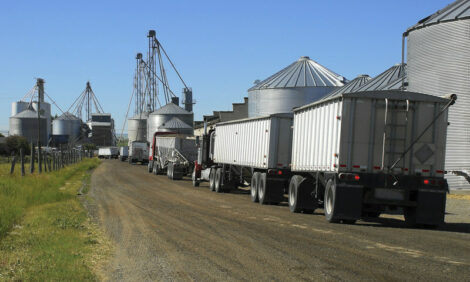



March Pork Exports Remain Solid with Exceptions
US - Exports of US pork and beef registered a solid performance in March, led by extremely strong pork sales to Mexico and a surge in beef exports to Vietnam, Japan and the Middle East.Pork plus pork variety meat exports rose 16 per cent in volume and 17 per cent in value over March 2008. Compared to the first quarter of 2008, pork exports have risen by 8 per cent in volume to 489,348 metric tons (1.08 billion pounds) and by 10 per cent in value to $1.12 billion. More than 23 per cent of first quarter pork and variety meat production was exported.
Mexico leads surge in pork exports, but current conditions create uncertainty
Total US pork exports to Mexico in March (45,741 metric tons or 100.8 million pounds) nearly doubled in volume from a year ago and rose 76 per cent in value to $65.2 million. For the first quarter of 2009, exports to Mexico increased 74 percent in volume (136,898 metric tons or 301.8 million pounds) and by 66 per cent in value to $204.7 million.
This performance is remarkable considering the sluggish economic conditions in Mexico, though these results do not reflect the economic slowdown Mexico has endured over the past few weeks due to H1N1 Influenza.
"The good news is that US pork has been performing extremely well in Mexico, and we have continued to grow the market at a very strong pace," said Chad Russell, USMEF regional director for Mexico and the Dominican Republic. "The bad news, obviously, is the disruption that has taken place in the market since that time. We have a significant rebuilding project underway with regard to pork demand and consumer activity in general, but these numbers give us confidence that US pork has a solid following and will bounce back quickly."
Japan continues to be the mainstay value market for US pork, with first quarter exports rising 13 per cent in volume to 119,445 metric tons (263.3 million pounds) and by 26 per cent in value to $424 million. March results reflected a slowdown, however, as pork exports rose just 1 percent in value over a year ago while slipping by 3.5 per cent in volume.
"Japan is still performing quite well, but we’re feeling the effects of higher domestic pork inventory levels, which are 132 per cent higher than last year," said USMEF Japan Director Gregory Hanes. "The influenza issue has been handled very well here, and we don’t expect lasting impact from that standpoint. But other market factors such as low domestic prices and the weak global economy have certainly made for tougher conditions in the second quarter of the year."
Pork exports to the China/Hong Kong region have declined by 36 per cent compared to the first quarter of 2008, with exports to Russia declining 38 per cent in volume and 44 per cent in value. These declines have been largely offset, however, by growth in Taiwan, the ASEAN region, the Caribbean, Australia and Central and South America.
First quarter pork plus pork variety meat exports to Taiwan increased 158 percent in volume and 121 per cent in value over the same period in 2008. Performance was also strong in the ASEAN region, where an increase of 56 per cent in volume and 58 percent in value was led by a near-doubling of exports to the Philippines. Exports to the Dominican Republic also doubled over last year, leading to a 74 per cent increase in both volume and value in US pork shipped to the Caribbean region. Exports to Australia have risen by 58 per cent in volume and 63 per cent in value, while Honduras, Guatemala and Colombia led Central and South America to a combined increase of 49 per cent in volume and 53 per cent in value.
For USMEF Chairman Jon Caspers, a pork producer from Swaledale, Iowa, these results underscore the importance of building diversified international markets for US pork.
"I am extremely proud of the fact that US pork has built such a strong global presence," Mr Caspers said. "This diversity allows the pork industry to maintain a strong overall performance, even when we encounter obstacles or adverse conditions in specific markets."








